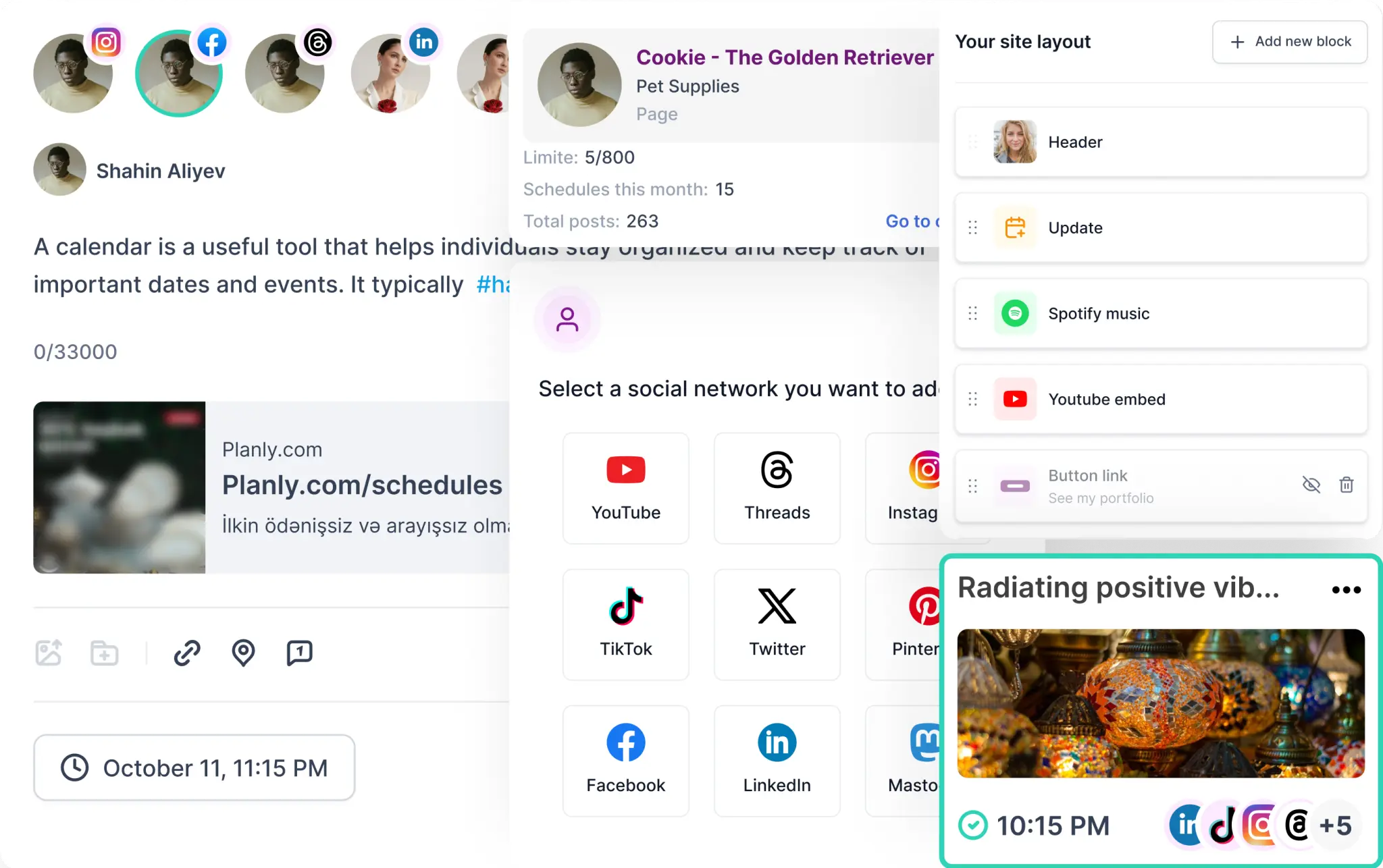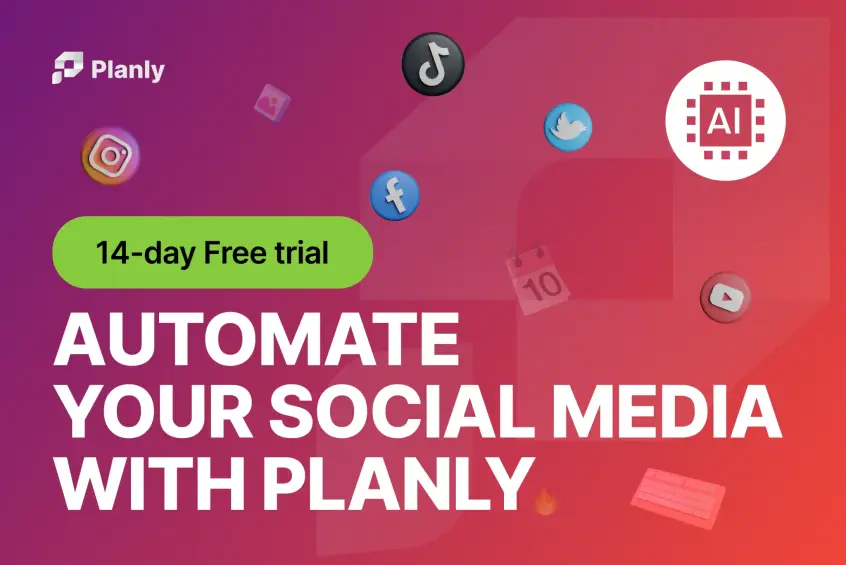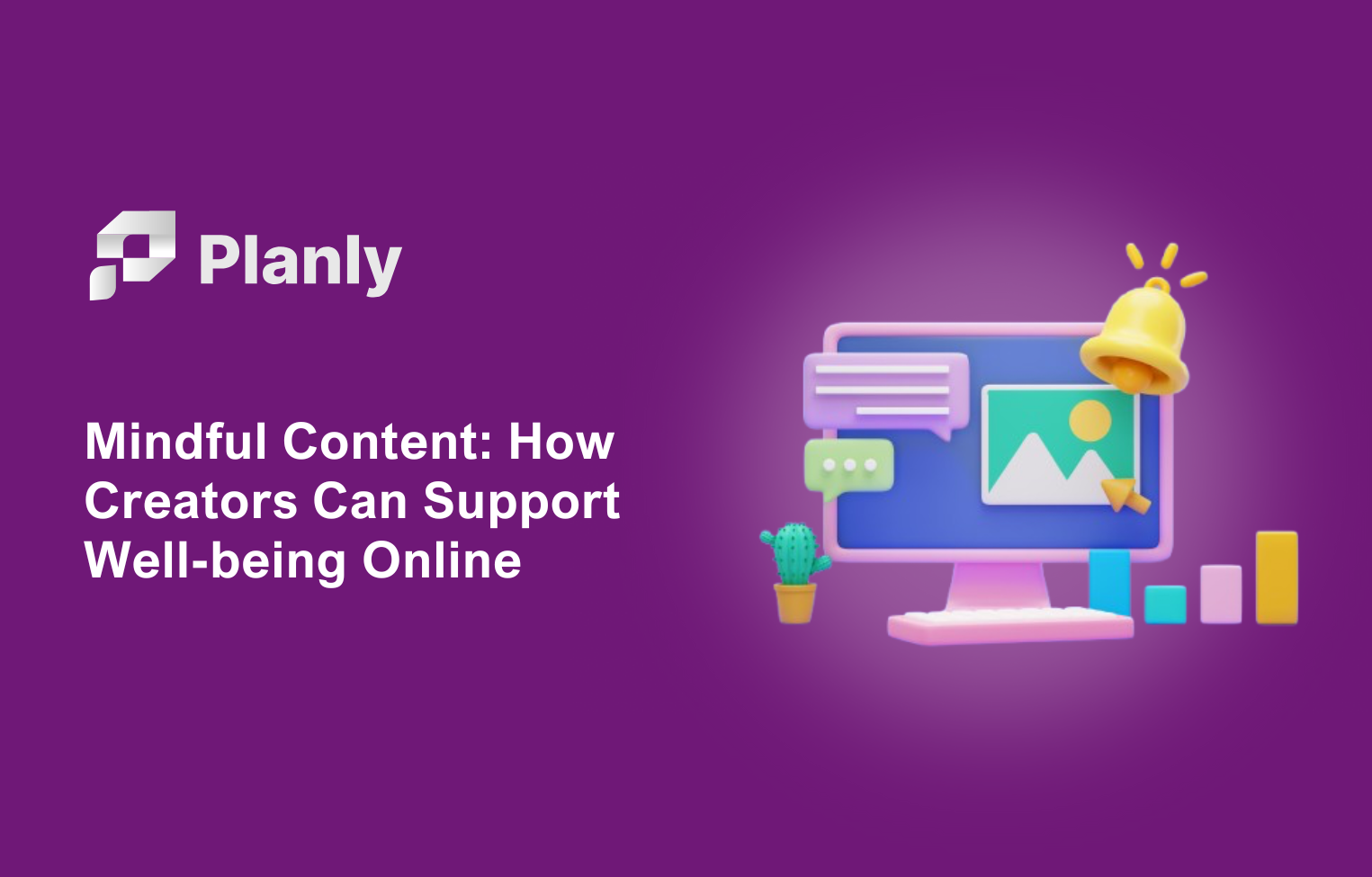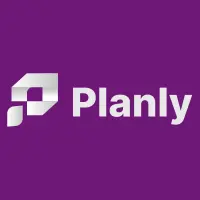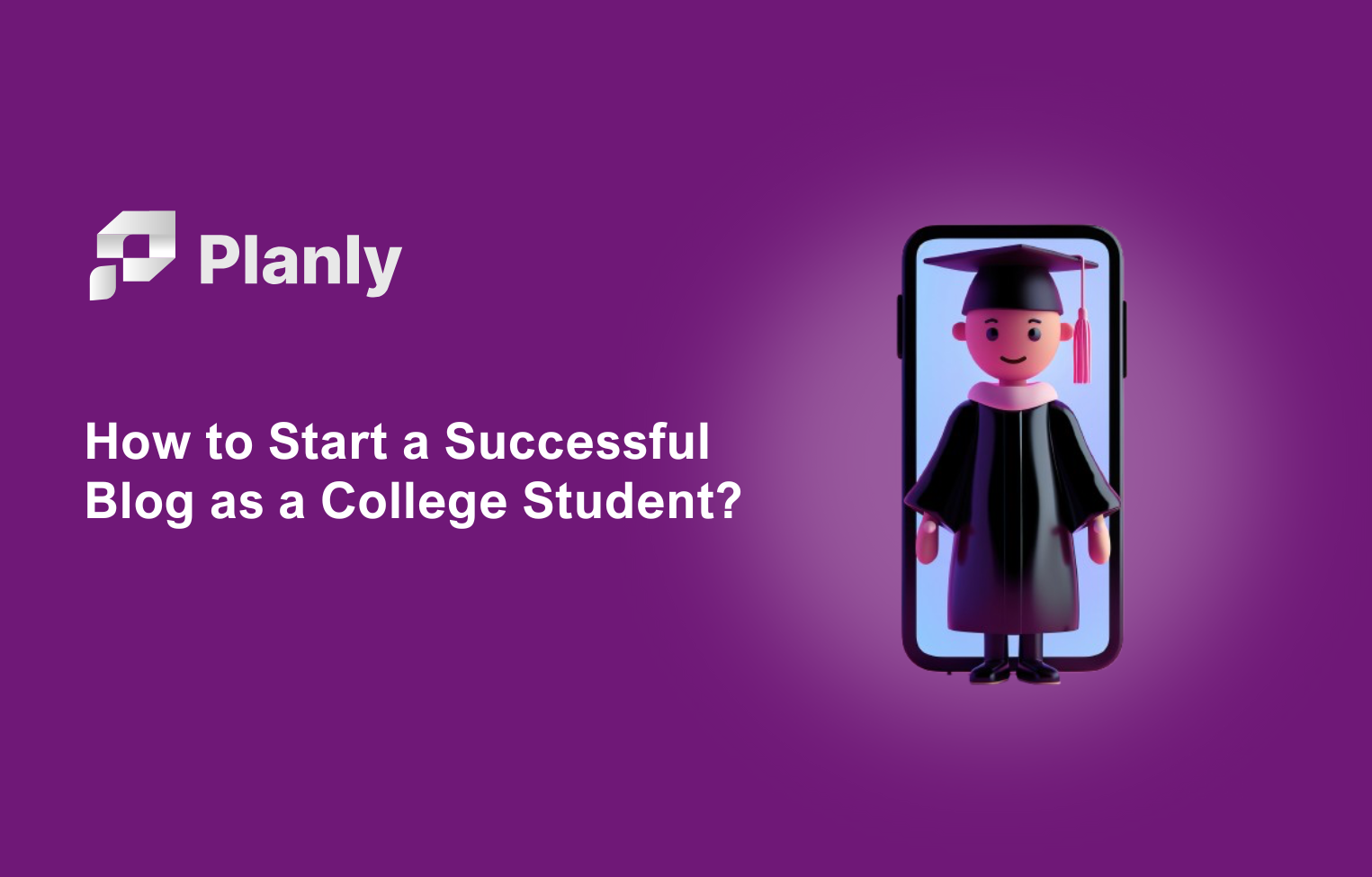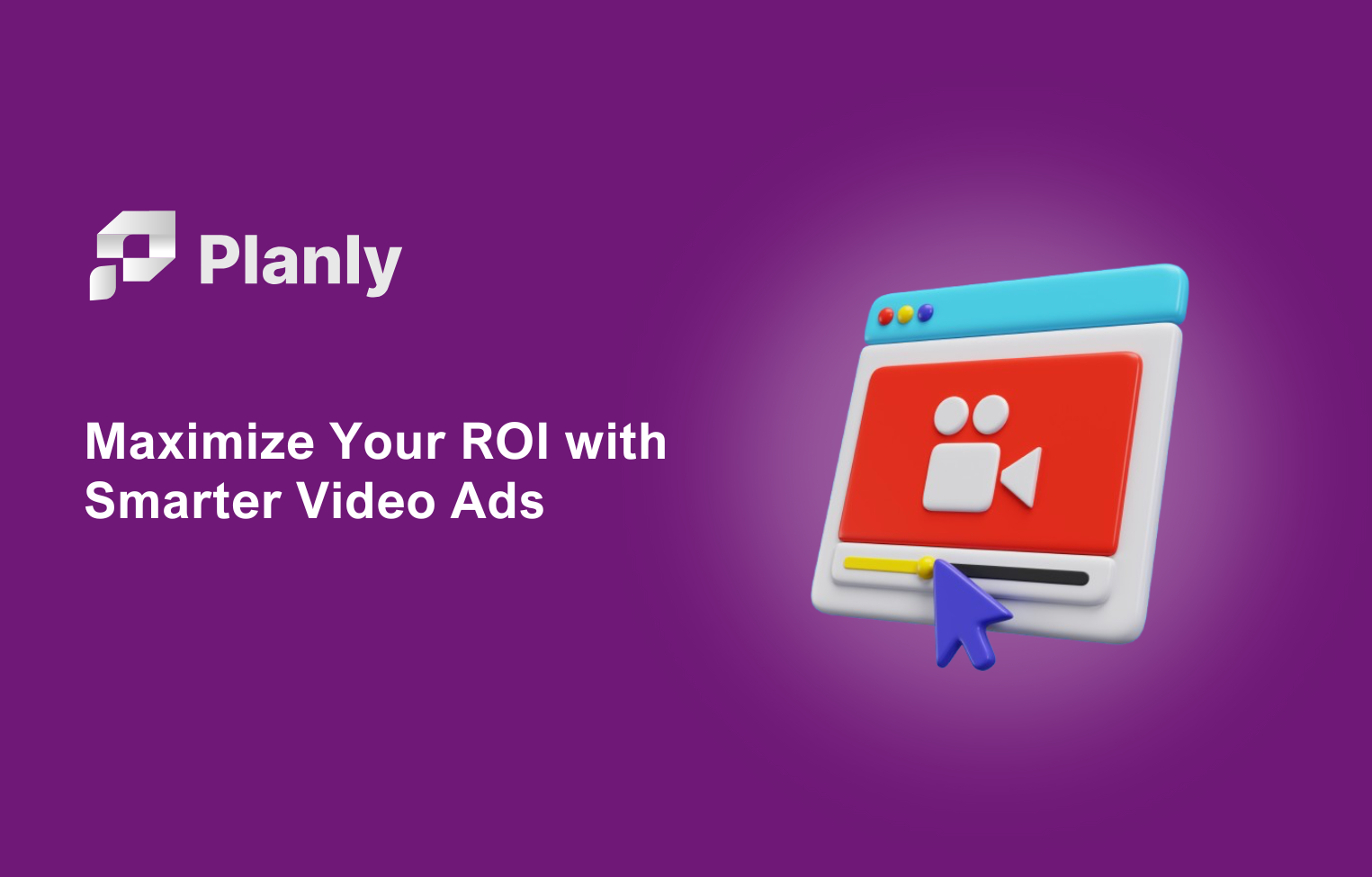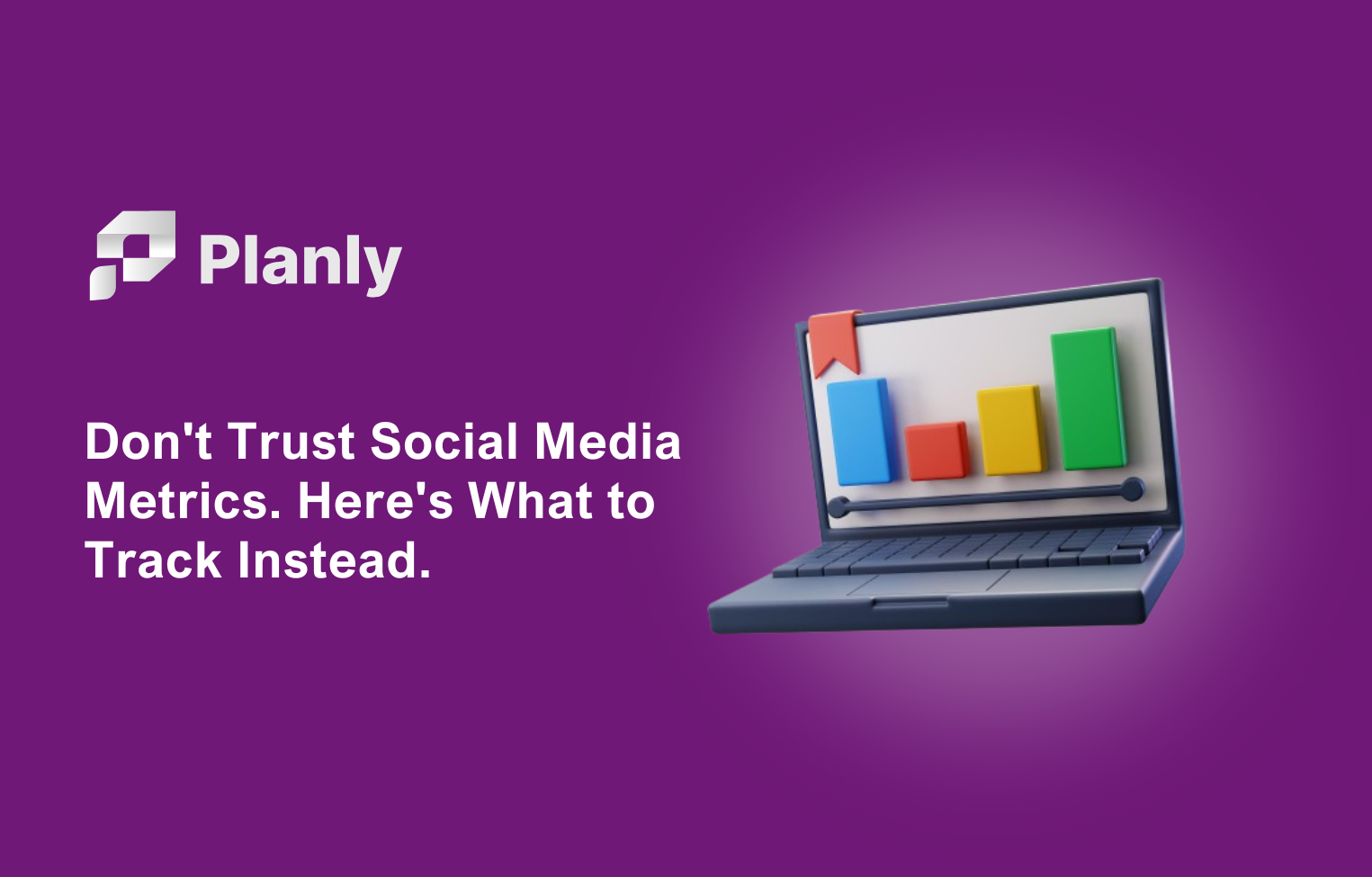Mastering the clock and calendar of social media isn't just a practice; it's a game changer for marketers aiming to connect with audiences effectively. With the digital world buzzing 24/7, pinpointing the perfect moment to showcase your content can transform your brand's digital footprint. Diving into this blog, you'll uncover not just the 'why' but the 'how-to' of scheduling content across various platforms. From grasping platform-specific nuances to aligning posts with audience routines, and leveraging powerful scheduling tools, we're offering a deep dive into strategies that ensure your brand's message not only lands but also resonates and engages. It's not just about being seen; it's about being remembered, and that's what this guide is set to achieve.
The Importance of Social Media Scheduling in Modern Marketing Strategies
Social media scheduling is a crucial component of modern marketing strategies. It ensures consistent and timely content delivery, keeping your audience engaged while maximizing reach during prime engagement hours. Furthermore, it enables marketers to plan ahead, maintaining brand relevance and seamlessly integrating marketing efforts across various platforms. With a well-structured scheduling system, brands can also ensure a balanced content distribution, preventing content overloading or underwhelming periods. Moreover, it allows for real-time adjustments based on analytics, helping marketers refine their strategies for better engagement. Scheduling tools also offer the flexibility to adapt to unexpected events or trending topics, making your brand's online presence dynamic and responsive.
The Benefits of Strategic Scheduling
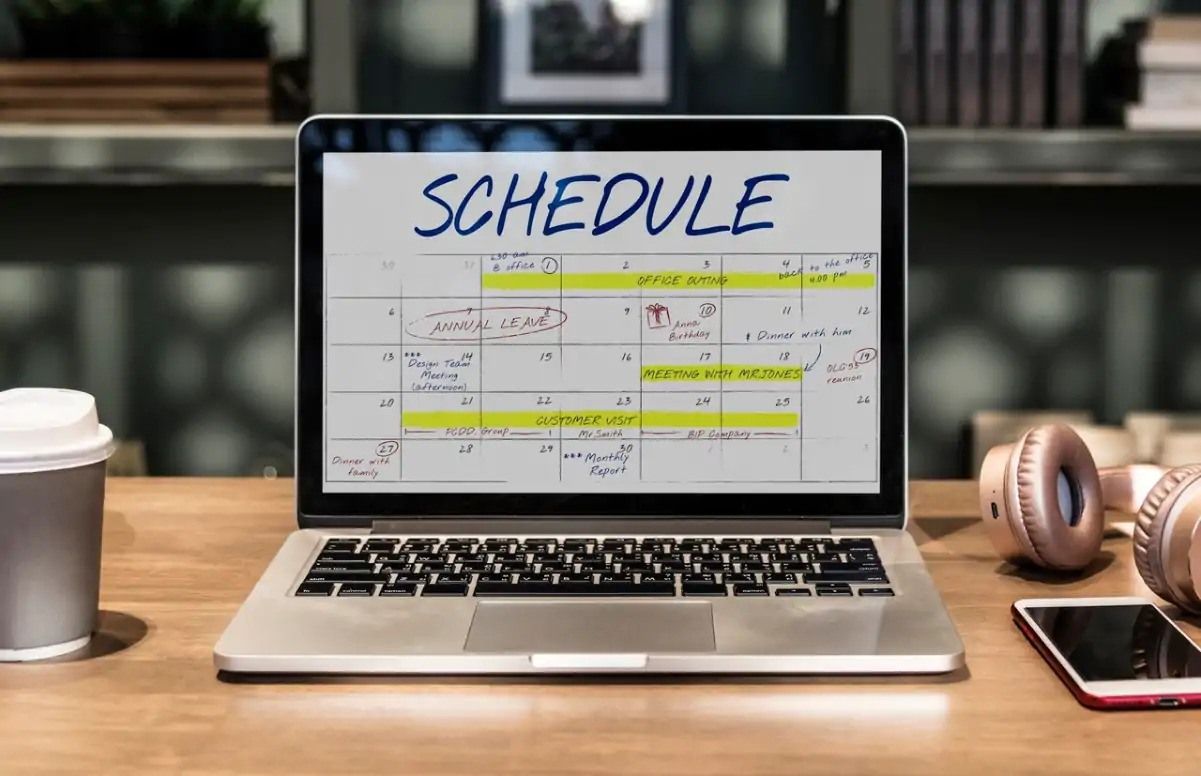
Now that we've covered the importance of social media scheduling, let's look at the benefits.
Reaching the right audience
Strategic scheduling allows you to reach the right audience at the most opportune times. Understanding when your audience is most active allows you to schedule posts to coincide with these periods. By aligning your content release with your audience's online habits, you maximize visibility and engagement opportunities. This targeted approach also ensures that your content is fresh and relevant, catering to the real-time interests and needs of your audience. Moreover, strategic scheduling helps in maintaining a global presence, ensuring that your content reaches different demographics in their respective peak times.
Enhancing engagement
By understanding when your content is most likely to be seen, you can increase engagement with timely posts and engaging visuals. This will help build relationships between your brand and its audience, enhancing customer loyalty and increasing sales opportunities. Engaging content, released at the right time, sparks conversations and shares, expanding your brand's reach organically. It also allows for immediate feedback and interaction, creating a lively and interactive brand persona. Furthermore, strategically timed content can lead to viral marketing opportunities, significantly enhancing your brand's visibility and reputation.
Saving time
Certainly! Here’s the revised paragraph incorporating the keyword “time management tips for agencies”:
Lastly, scheduling posts in advance will save time in the long run. This enables you to focus more on other aspects of your marketing strategy, such as content development and analysis. It also reduces the pressure and workload of daily posting, allowing for a more thoughtful and measured approach to content creation. The time saved can be invested in audience engagement and personal responses, fostering a more authentic and personal brand-audience relationship. Additionally, implementing effective time management tips , such as having a clear and structured content calendar, allows teams to collaborate more effectively and stay organized.
Media Scheduling Strategies for Optimal Results
Before you jump into scheduling your posts, here are a few strategies to keep in mind:
Understanding Social Media Algorithms
First, you'll want to understand social media algorithms, their impact on reach and post visibility, and how scheduling can work with algorithms to boost exposure. Keeping abreast of algorithm updates and adapting your scheduling strategy accordingly can significantly improve your content's performance. Understanding these algorithms enables marketers to create content that is not only timely but also algorithm-friendly, ensuring maximum visibility and engagement. It also helps in identifying the type of content that performs well on each platform, enabling a more targeted and effective content strategy.
The impact of algorithms on post visibility and reach
Social media algorithms prioritize posts based on engagement, relevance, and timeliness. These algorithms can impact your post's visibility and reach. For instance, posts with higher engagement are more likely to appear in users' feeds. Scheduling your posts strategically can help improve their performance in line with these algorithms. By analyzing algorithm trends and user engagement patterns, marketers can fine-tune their content for better performance, ensuring that their posts not only reach their audience but also resonate and engage them effectively.
How scheduling can work in tandem with algorithms to boost exposure
Scheduling your posts at the optimal times for engagement can help improve their performance in line with algorithms. For example, scheduling a post at peak engagement hours will increase its chances of reaching more users and gaining higher visibility. Additionally, you can experiment with various content types to see which resonates best with your audience. This approach not only aligns with algorithm preferences but also encourages innovation and creativity in content creation, keeping your brand's online presence vibrant and engaging.
Content Relevance and Audience Targeting

Next, we'll cover the importance of audience targeting and content relevance.
The significance of aligning content with your target audience's interests
When selecting content, consider your target audience's interests. Aligning content with their interests can help increase engagement and reach. This tailored approach ensures that your content is not only seen but also appreciated and shared, amplifying your brand's message. It also fosters a sense of community and belonging among your audience, as they see their interests and preferences reflected in your content.
Creating content that resonates with your target audience
Creating resonating content is key to success. Think about the type of content they might be interested in, and look for opportunities to create impactful visuals and engaging copy. Additionally, you can experiment with different formats, like videos or infographics, to generate greater engagement. This diversity in content not only caters to different audience preferences but also keeps your content fresh and interesting, encouraging regular interaction and engagement.
Importance of creating a content mix that resonates with your followers
By combining a mix of content types, you can create posts tailored to your target audience's interests and behavior patterns. This includes short-form content, such as tweets, and longer-form content, such as blog posts or videos. Additionally, consider using polls or quizzes to engage users in conversations about your brand. This varied content strategy ensures that your audience remains engaged and interested, providing them with a rich and diverse online experience with your brand.
Time Zone Considerations
Lastly, consider the importance of understanding your target audience's time zones. This can help you schedule posts at the optimal times for engagement and reach.
When your audience is most active?
Consider when your audience is most active. This can vary by platform, so research the best times to post on each social media channel you're using. Tailoring your posting schedule to these active periods ensures maximum visibility and engagement, allowing your content to make a significant impact. It also shows your audience that you understand and cater to their habits, fostering a stronger and more connected community.
Meta Business Suite lets you see the most active times for your audience across channels. Additionally, use analytical tools to track engagement metrics and understand when your target audience is online.
How to determine the time zones of your target audience
To determine your target audience's time zones, consider their location. This will help you understand when they're most active and tailor your posts accordingly. Additionally, use tools like Google Analytics to identify where your website visitors are located and create custom schedules for different regions. This localized approach ensures that your content is timely and relevant, significantly enhancing engagement and reach.
Best Social Media Scheduling Tools
What if the ideal time to post is outside of your available hours? Social media scheduling tools are a great solution. Here are the best social media scheduling tools.
Planly
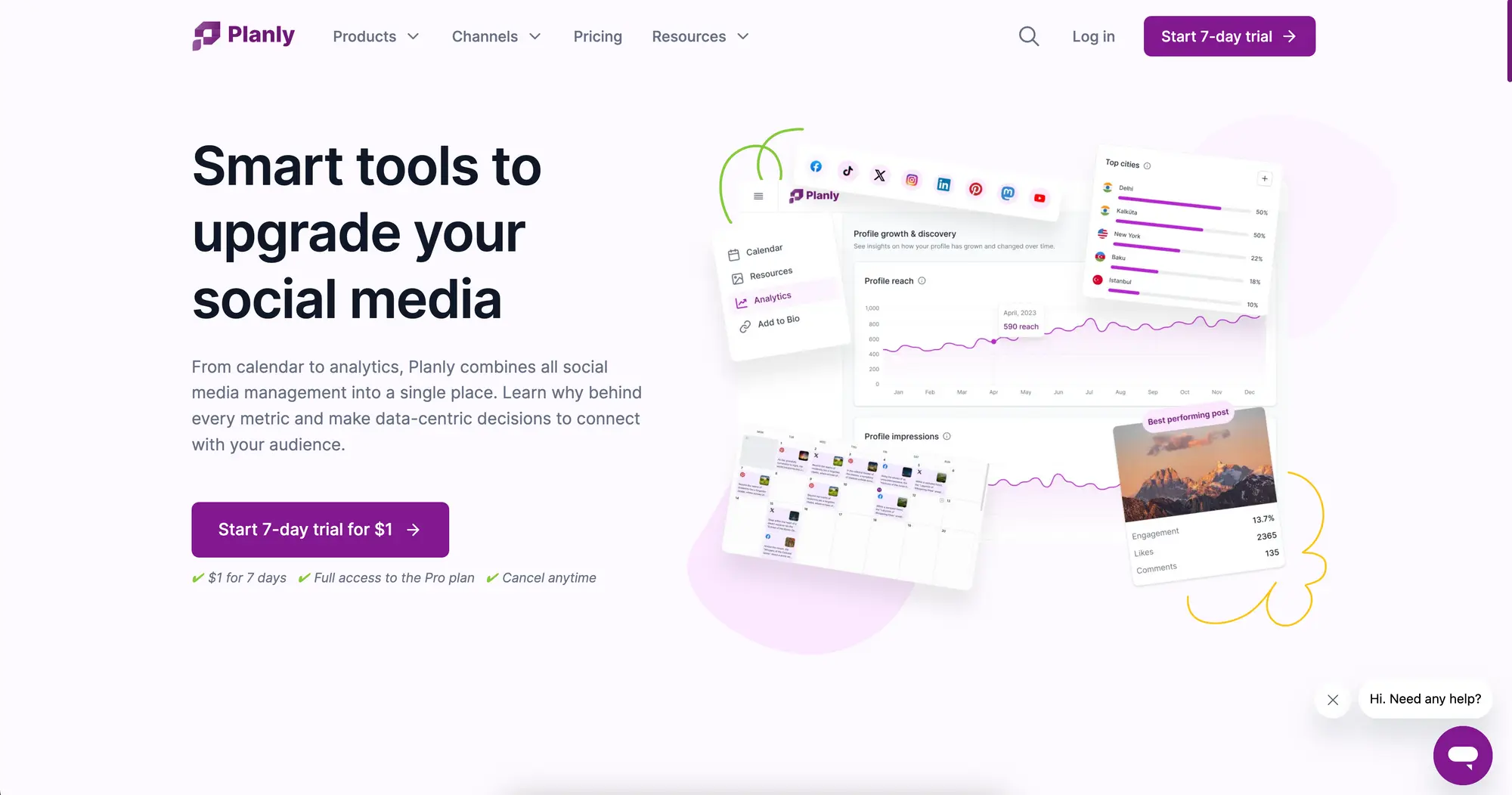
Planly is an intuitive social media scheduling tool ideal for visual planning for a wide range of platforms like Instagram, Facebook, X, and others, with grid planning and analytics features.
Hootsuite
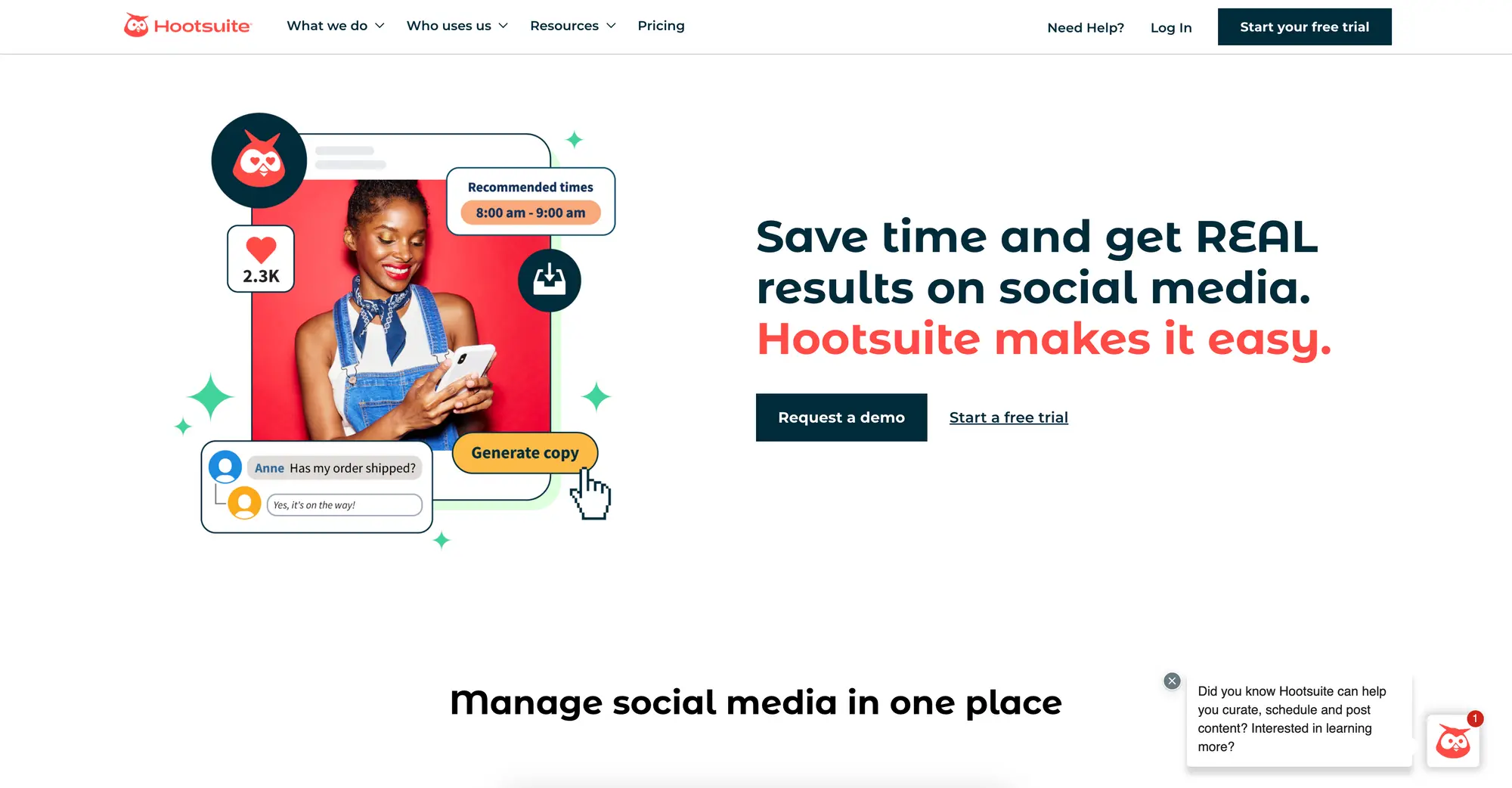
Hootsuite is a versatile platform for social media management, offering scheduling capabilities alongside analytics, monitoring, and content curation across multiple networks.
Buffer
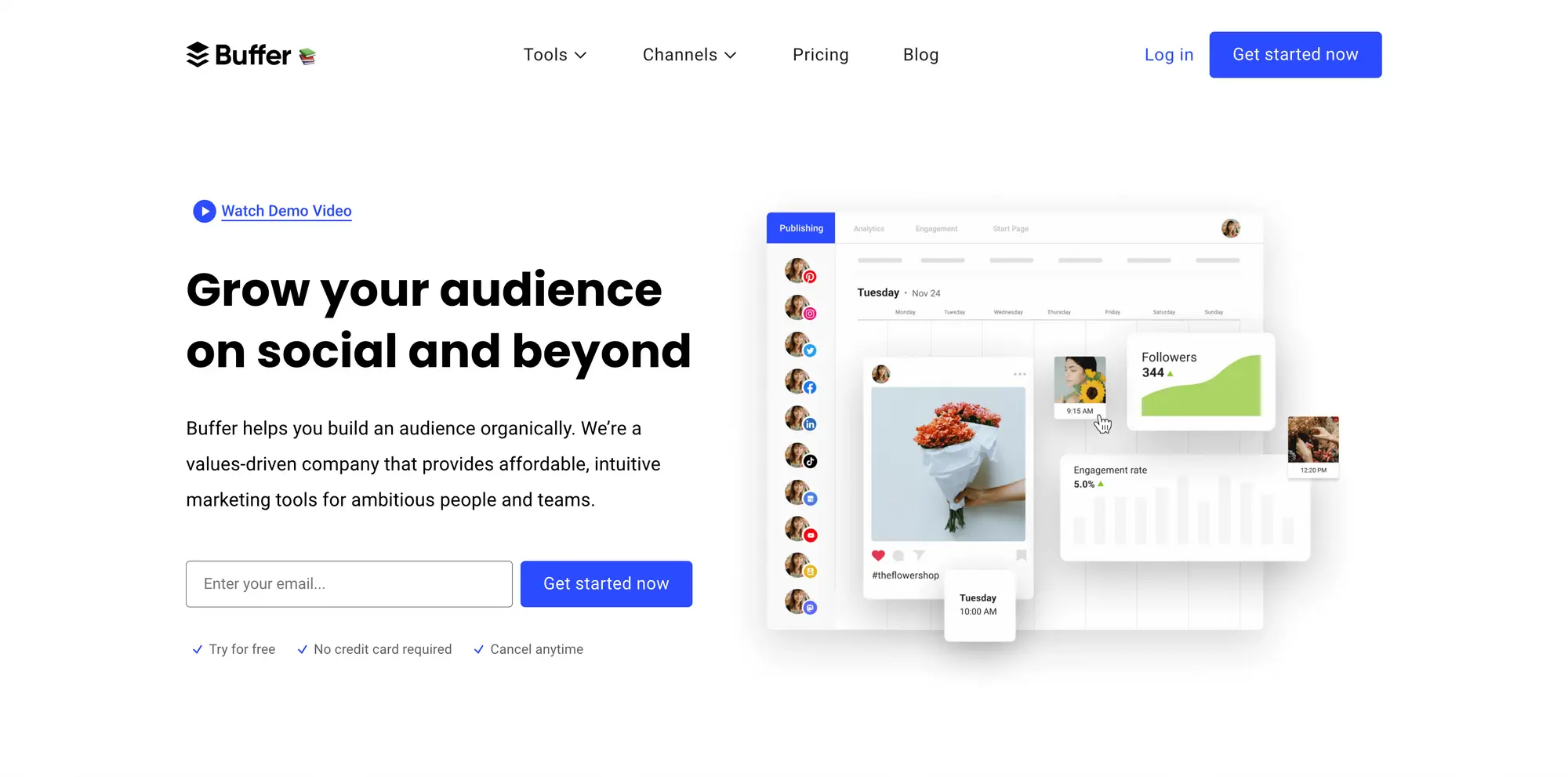
Buffer is a user-friendly tool allowing you to schedule, publish, and analyze your posts across multiple social media platforms, enhancing your online presence.
How to Craft an Effective Social Media Scheduling Plan
Now that we've looked at the importance of social media scheduling let's look at how to craft an effective plan.
Create a Content Calendar
Creating a content calendar is a strategic approach to planning social media posts. It aids in organizing, scheduling, and maintaining a consistent posting rhythm.
Many free templates online to automate this process, including AI content templates.
Source: Hubspot
How does a content calendar help in maintaining consistency?
A content calendar allows you to organize and plan posts in advance, ensuring consistency across all channels. It also helps to identify periods of high activity and peak performance, enabling you to maximize reach and engagement. With a well-maintained content calendar, you can evenly distribute your content over time, preventing any content gaps or overlaps that might confuse your audience or dilute your message. It also allows for better resource management, ensuring that your content creation team works efficiently towards predefined goals. Furthermore, a content calendar acts as a strategic tool, aligning your content release with key dates, holidays, or product launches, thereby maximizing the impact of your marketing efforts.
Segment Your Audience
Segmenting your audience into groups allows you to create custom content calendars tailored to their interests. This segmentation ensures that the content resonates more deeply with each group, increasing engagement and conversion rates. It also allows for more accurate measurement and analysis of the effectiveness of different types of content on different segments. By understanding which content performs best with which segment, you can continuously refine your content strategy. Additionally, audience segmentation helps in resource allocation, ensuring that you invest more in content types and channels that bring the best results for each audience segment.
How to plan content themes?
Creating content themes helps to ensure greater engagement. Consider the interests and behavior patterns of your target audience and any current trends or events occurring in their industry when creating content themes.
How to adapt your content themes for different platforms
Different platforms require distinct content approaches. Adapt themes by tailoring the message format and visual style to the platform's unique audience and guidelines. For instance, while a professional tone and detailed reports might work well on LinkedIn, the same content will need to be more casual and visually engaging on Instagram. Understanding the technical limitations and strengths of each platform is also crucial—for example, making use of Instagram stories for short-lived but impactful content, or leveraging Twitter's hashtag trends for wider reach. This strategic adaptation ensures that your content is not only seen but also appreciated and acted upon by your audience.
Perfect Timing for Different Social Media Platforms
Each social media platform has optimal posting times for maximum engagement. Considering these can significantly boost your content's visibility and audience interaction rates. For example, Instagram is best for posting on Mondays, Tuesdays, Wednesdays, and Fridays between 9 a.m. and 1 p.m. However, these timings should not be followed rigidly as audience behavior can vary based on numerous factors including geographic location and industry type. Regularly analyzing your engagement metrics is crucial to understanding the best times for your specific audience. Moreover, utilizing scheduling tools can help maintain a consistent presence on these platforms, even outside of optimal posting times.
Finding the Right Frequency for Posting
Finding the right frequency for posting is key to ensuring a successful social media strategy. Establishing an appropriate number and pace of posts helps to maintain consistency and engagement with followers without bombarding them with too much content. The ideal frequency might vary based on the platform, content type, and audience preferences. Regularly reviewing your engagement metrics is important to understand how your audience is responding and adjust your posting schedule accordingly. Moreover, maintaining a balance between regular posts and ad-hoc, reactive content can keep your feed fresh and relevant.
The balance between staying active and avoiding over-posting
Striking a balance between staying active and avoiding over-posting is the key to success. To achieve this, consider the level of activity your competitors generate and aim for a comparable frequency. Additionally, limit yourself to up to two daily posts on each platform. This balance ensures that you keep your audience engaged without overwhelming them, maintaining a positive brand perception. Moreover, focusing on the quality of content over quantity can lead to better engagement rates and a more loyal audience. Keeping an eye on engagement metrics can also provide valuable insights into how your audience perceives your posting frequency and can guide your strategy.
Consider your audience expectations and platform differences
Each social media platform attracts a distinct audience with unique expectations. Tailor your posting frequency and content type to match these expectations and platform norms. This alignment ensures that your content is well-received and can lead to higher engagement rates. Understanding the nuances of each platform can also help in creating content that is more likely to be shared and promoted by the users themselves, extending your reach organically. Regularly interacting with your audience and seeking feedback can also provide valuable insights, allowing you to refine your approach and better meet your audience's expectations.
Platform-Specific Insights
Understanding the nuances of each social media platform can help maximize engagement and reach.
- Instagram is a visually driven platform for sharing engaging photos and short videos. The best posting times are throughout the weekday, with peak engagement seen around lunchtime and evening.
- Facebook caters to a broad audience, making it suitable for diverse content types. Optimal posting times are from mid-morning to mid-afternoon during the week, with engagement decreasing on weekends.
- Twitter thrives on timely, concise content. Ideal posting times correlate with commuting hours, lunch breaks, and evening downtime, aligning with users' routine check-ins.
The relationship between posting frequency and engagement
Posting too frequently and/or inconsistently can hurt engagement. A gradual increase in posting frequency over time is the key to success, as it allows you to gauge audience interest and avoid overwhelming them with content.
FAQ's
When is the best day of the week to post on social media?
The best day of the week to post on social media varies per platform. Generally, engagement is highest during the middle of the week and lower towards the weekends.
How often should a company post on social media?
The ideal posting frequency varies per platform and depends on the size of your audience. Generally, a company should post 3-5 times daily on Twitter, 1-2 times weekly on Facebook, and 2-3 times daily on Instagram.
Use a Facebook post scheduling tool to get effective consistency in your social media posting.
Are there any free tools for scheduling social media posts?
Yes, numerous free scheduling tools, such as Hootsuite, Buffer, and Planoly, offer basic features for scheduling and managing posts.
Can I schedule posts on multiple platforms simultaneously?
Several tools like Hootsuite and Buffer allow scheduling posts across multiple platforms simultaneously, easing content management and saving time.
What role does content relevance play in social media scheduling?
Content relevance plays a crucial role in social media scheduling; it ensures the scheduled posts align with the interests and needs of the targeted audience.
How can I analyze the performance of scheduled posts?
Analyzing post-performance involves reviewing engagement metrics like shares, likes, comments, and click-through rates. Consider using analytics tools for comprehensive insights.
Is there an ideal time to post on Instagram based on time zones?
Instagram is best for posting on Mondays, Tuesdays, Wednesdays, and Fridays between 9 a.m. and 1 p.m.
Final Thoughts
In crafting an effective social media scheduling strategy, it's not just about posting content; it's about weaving a narrative that resonates with your audience, aligning with their pulse, and navigating the ever-evolving digital landscape with agility and insight. It's a symphony of strategic timing, understanding audience nuances, and adapting to platform-specific dynamics. Embrace the power of advanced scheduling tools to harmonize your efforts, ensuring your brand's message not only reaches far and wide but also strikes the right chord at the perfect moment. By doing so, you transform your social media presence from a mere echo in the digital realm to a resounding voice that captivates, engages, and leaves an indelible mark. As you tread this path, remember, it's not about the number of posts, but the impact of each interaction, each share, each connection. Forge ahead, armed with these insights, and sculpt a social media legacy that's not only seen and heard but felt and remembered.


